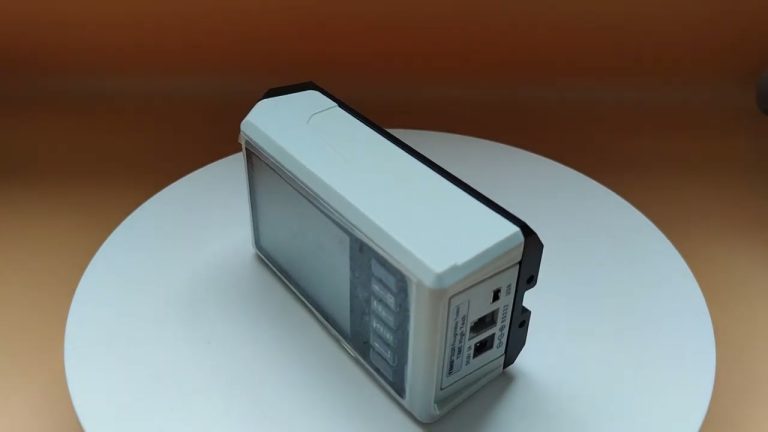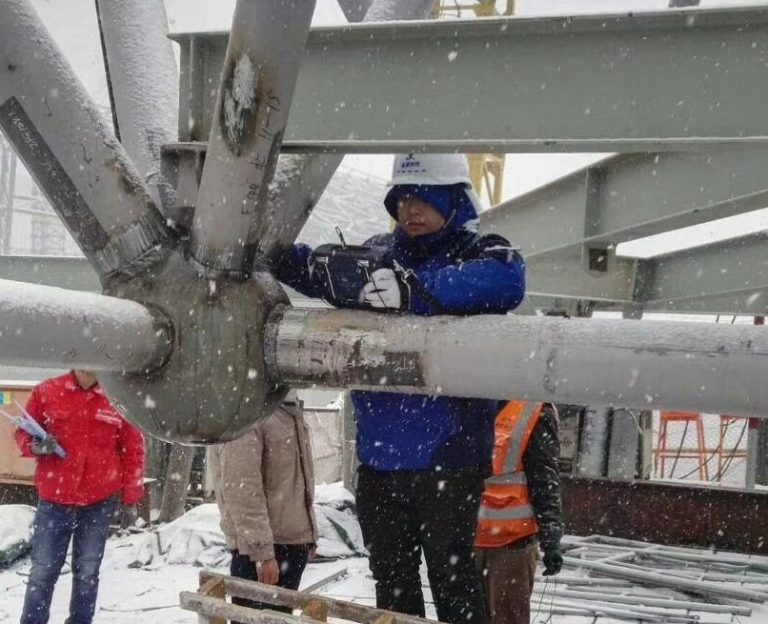BEIJING TIME VISION AI INSTRUMENT LTD.
https://timetech-ndt.com/
Email: timehardnesstester@gmail.com
WhatsApp: 008615201625204
——————————————————————————————————–
Manufacturer of Leeb hardness tester, ultrasonic thickness gauge, roughness tester, ultrasonic flaw detector.
There are two independent gates in which independent measuring can be performed as well as detection of the two gates. A or B is expressed in #. The types of results are as follows:
# gate amplitude (A%#): percentage at full amplitude in gate A or gate B.
# gate dB (dBt#): dB differential between the highest echo amplitude and gate threshold.
# gate reference: the value relationship between the highest echo amplitude and reference wave. There are different
calculation methods according to different settings of reference dB.
When the reference wave is selected from the waves recorded by operators, the result is the decibel differential
between the highest echo amplitude and that of the reference wave, and expressed in “dBr#”.
When the AWS D1.1 with indication value B is selected as the reference wave, the measured result is indication value
is D and expressed in “D11 #”
When DAC SL is selected as the reference wave, the result is decibel differential between the highest echo amplitude
and that of DAC SL, and expressed in “DAC#”
When AVG dB is selected as the reference wave, the result is decibel differential between the highest echo amplitude
and that of AVG curve, and expressed in “AVG#”
When AVG dB is selected as the reference wave, the results is evaluation equivalent of the highest echo in gate area
by means of AVG curve, and expressed in “ASZ#”.
# gate sound path(S#): Under the peak value detection mode, S# means the sound path of the highest echo. Under
front distance detection mode, S# means the sound path that the echo first exceeds the gate threshold.
The sound path difference between gate A and gate B (SAB): SAB means the sound path differential between gate A
and gate B
#gate depth (D#): Depth of the highest echo in gate A or gate B.
DAB: the depth differential between gate A and gate B, can be used to detect the height of cracks.
P# : the projection differential between gate A and gate B.
Manufacturer of Leeb hardness tester, ultrasonic thickness gauge, roughness tester, flaw detector.
This appendix lists the terminology used throughout this operating manual, to explain the
principals of ultrasonic techniques used for the non-destructive inspection of components. A good
understanding of the exact meaning of these terms will be helpful to ensure the correct use of this
operating manual.
1. Pulse amplitude: voltage amplitude of a pulse signal. When type A display is used, normally it
is the height from time base line to the pulse peak.
2. Pulse length: duration of a pulse in terms of time or no. of cycles.
3. dB: the logarithmic expression of the ratio of two amplitudes or strengths.
4. Sound impedance: ratio of sound voltage of acoustic wave to a particle’s vibration speed,
normally it is expressed by the product of density p times by velocity c of the media.
5. Matching of sound impedance: coupling of two media equivalent to the sound impedance.
6. Attenuation: the phenomenon that the sound voltage weakens gradually when an ultrasonic
wave propagates in the media as the propagation distance increases.
7. Total attenuation: the weakening in sound voltage in special waveform for ultrasonic beams of
any shape that is caused jointly by scattering, absorbing and diffuse of acoustic beam, etc. as
the propagation distance increases.
8. Attenuation coefficient: loss of sound voltage in unit distance due to material scattering when
the ultrasonic wave is propagating in media, normally it is expressed by dB/cm.
9. Defect: discontinuity whose size, shape, direction, position or nature will damage the effective
use of a work piece, or that doesn’t meet the specified acceptance standard.
10. Type A display: a kind of way for expressing information where horizontal base (X axis) is
used for expressing distance or time, and the deflection which is vertical to the base (Y axis) is
used to express the amplitude.
11. Sending pulse: electric pulse added to the energy exchanger for producing ultrasonic wave.
12. Time-base line: horizontal scan line expressing time or distance in type A display fluorescent
screen.
13. Scan: the repeated movement of the same style from electronic beams that runs cross the
detector’s fluorescent screen.
14. Scan range: Max. pitch interval that can be displayed on the time base line of the fluorescent
screen.
15. Scan speed: ratio of cross axis to corresponding pitch interval on the fluorescent screen.
16. Delayed scan: a kind of scanning way where the starting part of the time base will n







